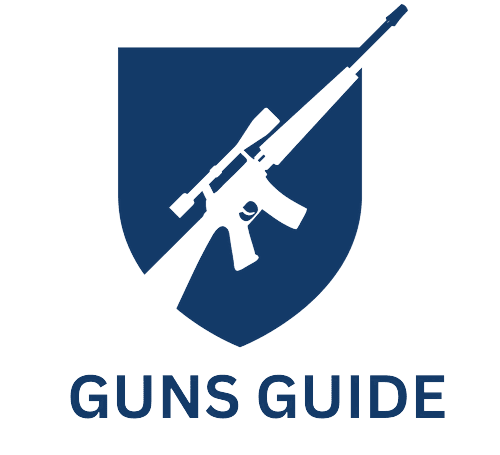The Remington V3 is a popular semi-automatic shotgun that has garnered attention for its innovative design and reliable performance in the field, as well as in competitive shooting sports. Despite its widespread appeal, there have been several reported issues with the V3 which have led to a significant number of users experiencing difficulties. This blog post aims to address these problems, identify their causes, and provide solutions and fixes where possible. By understanding these issues and their fixes, users can make informed decisions and maximize the performance and longevity of their Remington V3 shotguns.
Remington V3 Problems
In this section, we will be discussing several common problems associated with the Remington V3 shotgun. For each problem, an in-depth explanation of its underlying causes and potential fixes will be presented.
1. Ejection Failure
One of the more common problems with the Remington V3 is the occasional failure to eject spent shells. This can be a frustrating issue, especially in high-stakes shooting situations or when competing.
Causes:
- Poor quality ammunition: Low-quality ammunition can result in inconsistent ejection due to variations in the brass or the amount of powder.
- Dirty chamber and/or bore: A buildup of debris can cause the spent shell to stick in the chamber, inhibiting proper ejection.
- Weak or broken extractor spring: A worn-out or damaged extractor spring may not provide sufficient force to eject spent shells effectively.
Solutions:
- Use high-quality ammunition: Using consistent and reliable ammunition can help prevent ejection issues.
- Clean your shotgun regularly: Regular cleaning and maintenance can prevent debris buildup and ensure smooth operation.
- Replace the extractor spring: If the spring is weak or damaged, replacing it with a new one should help resolve ejection issues.
2. Failure to Feed
Another reported issue with the Remington V3 is the occasional failure to feed shells into the chamber properly. This can disrupt the shooting process and, in some cases, lead to user frustration.
Causes:
- Damaged or dirty magazine tube: The presence of debris or damage to the magazine tube can hinder proper shell feeding.
- Follower binding: The follower within the magazine tube can bind or stick, preventing the smooth feeding of shells.
- Weak or broken magazine spring: A worn or damaged magazine spring may not provide enough tension to effectively feed shells.
Solutions:
- Clean and inspect magazine tube: Check for damage and ensure regular cleaning to maintain proper shell feeding.
- Replace or lubricate the follower: If follower binding is the issue, consider replacing it with an upgraded follower or apply additional lubrication.
- Replace magazine spring: If the magazine spring is weak or damaged, installing a new one can help restore proper feeding.
3. Trigger Reset Problems
Some users have reported issues with the trigger reset, which can create a sense of unreliability and negatively impact shooting performance.
Causes:
- Follower spring tension: Insufficient spring tension within the trigger group can result in poor trigger reset.
- Dirty or damaged trigger group: Debris buildup or damage within the trigger group can prevent proper functioning.
Solutions:
- Adjust follower spring tension: If tension is insufficient, consider adjusting the spring tension to improve trigger reset.
- Thoroughly clean and inspect trigger group:
Regular cleaning and inspection of the trigger group can prevent debris buildup and help maintain proper trigger function.
4. Cycling Issues
Some Remington V3 users have noted issues with the shotgun cycling between shots, which can disrupt the flow of shooting and impair accuracy.
Causes:
- Gas system obstruction: Debris or obstruction within the gas system can disrupt cycling.
- Impoper assembly: After disassembly for cleaning or maintenance, improper reassembly can sometimes cause cycling issues.
Solutions:
- Clean and inspect the gas system: Regular cleaning and inspection can help prevent obstructions and ensure smooth cycling.
- Ensure proper assembly: Carefully follow reassembly instructions after cleaning or maintenance to ensure correct operation.
5. Stock Issues
Another issue sometimes reported with the Remington V3 is discomfort or problems with the stock design.
Causes:
- Improper fit for the user: Every shooter is different, and the factory stock may not provide an optimal fit for all users.
Solutions:
- Invest in an aftermarket stock: A wide variety of aftermarket stocks are available in different designs and materials, allowing users to find one that better suits their needs and shooting preferences.
Conclusion
While the Remington V3 is a well-regarded shotgun with a strong reputation for reliable performance, it is not without its share of problems. By understanding the various issues that may arise and following the provided solutions and fixes, users can optimize their V3 experience and maintain confident performance in the field or on the range. Ultimately, regular maintenance, proper handling, and using quality ammunition will contribute significantly to a satisfying and problem-free relationship with the Remington V3.
Frequently Asked Questions
What is the difference between the Remington Versa Max and the V3?
The Remington Versa Max has a gas system, while the V3 has an inertia-driven system. The Versa Max also has a larger capacity for shells and can handle a wider range of loads. The V3 is lighter in weight and can cycle faster than the Versa Max.
When was the Remington V3 made?
The Remington V3 was first introduced in 2016.
Is the Remington V3 gas or inertia?
The Remington V3 has an inertia-driven system.
How many rounds does a Remington V3 hold?
The Remington V3 can hold up to 3 shells in the magazine and 1 in the chamber, for a total of 4 rounds.
What should I do if my Remington V3 is not cycling properly?
You should first check to make sure the gun is clean and properly lubricated. If the issue persists, it may be necessary to have it inspected by a qualified gunsmith.
Can I use different types of loads in my Remington V3?
Yes, the Remington V3 is designed to handle a wide range of loads, including light target loads and heavy hunting loads.
What is the warranty on a Remington V3?
The Remington V3 comes with a 2-year limited warranty.
Are there any common problems with the Remington V3?
Sometimes users have reported issues with the gun not cycling properly or failing to eject shells, but these issues are usually resolved with proper cleaning and maintenance.
Can I use the Remington V3 for hunting?
Yes, the Remington V3 is a reliable and versatile shotgun that can be used for hunting a variety of game, including waterfowl, upland birds, and turkeys.
What is the price of a Remington V3?
The price of a Remington V3 can vary depending on the retailer and any additional features that may be included, but the MSRP for a basic model is around $900.

